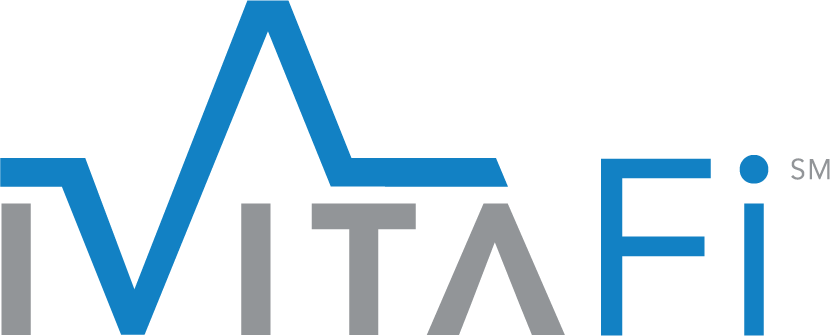In the ever-evolving landscape of healthcare financing, the choice between non-recourse and recourse options carries significant weight for healthcare providers. Non-recourse patient financing emerges as the superior choice, offering a multitude of compelling advantages over its recourse counterpart. While both options aim to facilitate the financial aspects of patient care, the fundamental difference lies in how they manage risk and revenue. In this blog, we will delve into the critical distinctions between these financing models, shedding light on why non-recourse patient financing is the clear frontrunner for healthcare providers seeking both financial stability and patient satisfaction. We will explore five key reasons why non-recourse financing outshines recourse financing, ushering in an era of predictable revenue streams, improved financial forecasting, risk mitigation, reduced collection hassles, and long-term financial stability. Join us on this journey to discover why non-recourse patient financing is not just a choice but a strategic imperative for healthcare providers committed to delivering quality care while safeguarding their financial well-being.
Understanding the Fundamental Difference
At its core, the essential distinction between non-recourse and recourse patient financing lies in the allocation of risk. In the case of recourse financing, healthcare providers assume the responsibility for collecting payments from patients. If a patient defaults on their financial obligations, the burden falls squarely on the hospital’s shoulders. Conversely, non-recourse patient financing shifts this risk to a third-party financing entity, ensuring that the hospital is shielded from the complexities and costs of loan defaults and collections.
- Predictable and Reliable Revenue Stream
One of the most compelling reasons why non-recourse patient financing shines is its ability to offer healthcare providers a predictable and reliable revenue stream. In this model, the financing company assumes the risk of non-payment, providing a safety net for hospitals. Even if patients are unable to fulfill their financial obligations, the hospital still receives payment from the financing company. This mitigates the risk of unpaid bills and ensures a consistent flow of revenue, enabling better financial forecasting and resource planning for the organization. In contrast, recourse patient financing places the burden of debt-related risks solely on the hospital, making the revenue stream less predictable and potentially subject to fluctuations caused by patient defaults.
- Improved Financial Forecasting
Non-recourse patient financing emerges as a superior choice for hospitals seeking to enhance financial forecasting for several compelling reasons. Firstly, it significantly limits risk exposure by transferring the burden of patient defaults to the financing entity. In non-recourse financing, hospitals are not held accountable if patients fail to repay the loan, ensuring greater certainty in financial projections. Secondly, it fosters a consistent and predictable cash flow environment. Immediate payment for services rendered, coupled with the transfer of nonpayment risk to the financing entity, empowers hospitals to forecast cash flow accurately and strategically manage their financial operations. In contrast, recourse patient financing often leads to irregular payment patterns or delays due to patient defaults, posing challenges in projecting future revenue streams reliably.
- Risk Mitigation of Bad Debt
Non-recourse patient financing excels at mitigating bad debt risks for hospitals, offering several distinct advantages. Firstly, it significantly reduces financial risk by transferring the burden of default to a third-party financing entity. This means that if a patient fails to meet payment obligations, the hospital remains shielded from the burden of the outstanding debt, enhancing overall financial stability. Secondly, it enhances cash flow management by ensuring immediate payment for services rendered. The financing company takes on the responsibility of collecting patient payments over time, enabling hospitals to maintain a steady cash flow. This, in turn, allows hospitals to efficiently cover operational expenses and make essential investments without the need to wait for patient payments, further fortifying their financial resilience.
- Minimizing the Need for Costly Collections
Non-recourse patient financing offers hospitals a robust strategy for minimizing the need for costly collections, presenting several compelling advantages over recourse patient financing. Firstly, it reduces collection costs significantly by entrusting the responsibility of collecting payments to a third-party financing company. This eliminates the hospital’s need to engage in resource-intensive collection efforts such as hiring collection agencies or pursuing legal action against patients, resulting in substantial time and cost savings. Secondly, it optimizes cash flow by ensuring immediate payment for services rendered. When patients opt for this financing option, hospitals receive prompt payment directly from the third-party financing provider, eliminating waiting periods and enhancing cash flow predictability, enabling hospitals to meet their financial obligations more efficiently. Additionally, non-recourse patient financing lightens the administrative burden by transferring tasks associated with patient billing and collections to the financing provider, freeing up hospital staff to focus on delivering quality care. Furthermore, it mitigates financial risk by shifting the burden of non-payment to the financing provider, shielding the hospital’s bottom line from patient defaults and potential write-offs. Lastly, it contributes to improved patient satisfaction by offering patients flexible healthcare expense management options, alleviating financial burdens, and enhancing access to care, ultimately reducing default instances and the need for collections.
- Long-Term Financial Stability
Non-recourse patient financing emerges as a strategic choice for hospitals seeking long-term financial stability. Its advantages over recourse patient financing are substantial. Firstly, it enables risk mitigation by shifting the responsibility for non-payment to a third-party financing provider. In contrast, recourse financing leaves hospitals vulnerable to patient defaults. Secondly, it ensures a predictable cash flow as hospitals receive immediate payments, eliminating uncertainties associated with waiting for patient payments. This predictability enhances financial management and future investment planning. Thirdly, it facilitates improved financial planning with clearer revenue stream estimates, benefiting budgeting, forecasting, and investment decisions. Additionally, non-recourse financing minimizes bad debt and write-offs, safeguarding a hospital’s financial stability over time. Lastly, it allows hospitals to focus on core operations by outsourcing administrative tasks like billing and collections to a financing provider, optimizing resources, and ensuring long-term financial strength.
Conclusion
In conclusion, non-recourse patient financing emerges as the superior option over recourse patient financing for healthcare providers. The fundamental distinction lies in the allocation of debt-related risks. Non-recourse financing transfers the responsibility to the financing company, shielding hospitals from the complexities and costs of loan defaults and collections. In contrast, recourse financing places the burden solely on the hospital, potentially impacting overall collections and exposing providers’ patients to high interest rates, fees, and aggressive collections practices. Non-recourse patient financing not only mitigates the risk of bad debt but also promotes long-term financial sustainability by optimizing revenue, enhancing cash flow, and improving resource management. It improves patient access to care by offering flexible payment options and alleviates administrative burdens, allowing providers to prioritize delivering high-quality care. By choosing non-recourse patient financing, healthcare organizations can achieve financial security, maximize operational efficiency, and ultimately provide better care for their patients.
iVitaFi Non-Recourse Patient Financing
iVitaFi’s non-recourse patient financing program can make healthcare more affordable for patients by allowing them to pay for medical expenses over time. This helps to ease the financial burden of unexpected costs or treatments that insurance may not cover. For healthcare providers, offering iVitaFi’s patient financing can increase patient satisfaction, retention, referrals, and revenue while reducing the cost of collecting payments. Our program also provides a competitive advantage in the market by offering a unique service.
iVitaFi’s non-recourse patient financing assumes the risk of non-payment by the patient. In other words, if the patient is unable to repay the loan, we do not pursue the provider or the patient’s assets for payment. Our non-recourse financing is popular because it provides patients with more flexibility and reduces the financial risk for providers. Patients can receive the care they need without worrying about the financial burden, while providers can offer affordable payment options without assuming the risk of non-payment. IVitaFi’s, non-recourse patient financing is a win-win for both patients and providers, allowing for greater accessibility and affordability of healthcare services.
Contact us today if you are a provider seeking to learn more about the differences and benefits of non-recourse and recourse patient financing.

